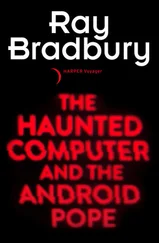By 1976, the homebrewers began to experiment with various graphics devices for the Altair. They were able to produce kaleidoscopic effects and to devise very simple games, but the computers themselves were nowhere near powerful enough to recreate a minicomputer program like Spacewar. Ironically, then, the next step in the evolution of the personal computer industry did not come from the general-purpose computer technology of the Altair or its immediate successors, but from far less versatile machines.
In order for an electronic information-processing device to be called a computer, it has to be programmable. But by the mid 1970s, it was possible to build machines that, using “dedicated,” nonprogrammable microchips, could create sophisticated graphic effects. These machines were called “video games,” and although they didn’t have much to do with microcomputers, they hastened the day when the personal computer cult would break through to infect the general population.
Video games resulted from the entrepreneurial combination of two different ideas that had been around for a long time. Since 1961 and Spacewar, it was obvious to those few people who knew about interactive computing and display technology that sophisticated games could be created by using video graphics and microelectronic controllers. Meanwhile, arcade games in the form of pinball machines had been a steady business for decades. It took another Silicon Valley entrepreneur by the name of Nolan Bushnell, along with several other partners, to decide to put these two factors together.
Forming a company that he initially named Syzygy, Bushnell tried to market the game machine Computer Space, a modified version of Spacewar, to bars and pizza parlors as an electronic substitute for pinball. The idea didn’t catch on—only 2000 machines were sold. He then tried something simpler. In 1974, he unveiled Pong and marketed it to the same places. It was an absurdly simple game by Spacewar standards; using joysticks, the players moved light-paddles to bounce a ball of light back and forth across the screen.
Pong was a hit, to put it mildly. After his first test machines were installed, Bushnell received complaints from the proprietors of these establishments that his machines had broken down. When he followed up on the complaints, he discovered that the machines were malfunctioning only because their coin boxes had been jammed full before anybody had come back to empty them! In fact, when Bushnell approached a number of pinball-machine manufacturers in Chicago with the proposal that they might have a financial interest in his game, most turned him down. Bally Corporation, a giant pinball-machine manufacturer, was interested at first but then backed away from an agreement with him, largely because the corporation couldn’t believe the financial statistics he was presenting on the basis of his experience with his test markets.
Indeed, it was Nolan Bushnell and his crude video games, launched a year before the Altair hobbyists and homebrewers began experimenting with personal computers, that triggered the huge influx of capital which would ultimately transform the hobbyist community into the sizeable home computer industry. In time, the success of the arcade games spawned home versions. The idea that small, inexpensive versions of arcade games could be connected to home television sets ultimately turned out to be just the beginning of the evolution of increasingly sophisticated microprocessor-based devices for home entertainment.
People started pouring quarters into Bushnell’s arcade machines—to the tune of millions of dollars yearly. Bushnell followed up his first hit with another successful but slightly more advanced game, Tank Command, in which simulated tanks stalked through a video maze and hurled blobs of light at one another. Syzygy was then renamed Atari, after a move in the ancient Japanese game Go, and Bushnell hired creative young programmers and electronics wizards to think up new games. A young man by the name of Steve Jobs was one of Atari’s early employees.
This new company combined electronic expertise that had previously been associated with defense contractors and consumer electronics manufacturers with the playfulness and love of games that characterized the hacker era. Two years after the company was born, it was doing $39 million worth of business. In 1976, Bushnell sold his increasingly profitable enterprise to Warner Communications for $26 million. For about six years, Warner’s buyout of Bushnell was one of the smartest investments in history: By 1982, Atari’s annual sales had swollen to more than $2 billion.
Atari in its Warner incarnation was to play an important role in the rise and fall of many other home computer companies. But in the 1970s, before the first home computer companies got off the ground, it was the sophisticated arcade games of Japanese manufacturers that turned the video game industry from a multimillion-dollar infant into a multibillion-dollar giant, unleashing an unexpected social phenomenon in the process. The key to the video game craze was in the “dedicated” hardware that enabled manufacturers to develop visual displays that were far better than those possible on the first programmable microcomputer systems.
Those games made possible an entirely new kind of sensory experience. In a real sense, they were even selling an experience—a means of ventilating primitive fight-or-flight reflexes through the various “zap the aliens” scenarios, through a visual and auditory encounter of hypnotic intensity, and through cognitive and perceptual gymnastics that offered immediate and quantitative rewards. The flashy high-resolution graphics (“high res,” as it is known in the industry), the direct interaction via joysticks or buttons or trackballs, the electronic sound effects, and the way the games were designed to keep proficiency, difficulty, and level of reward in a delicate balance all seemed to precipitate an unnatural hunger in a large portion of every nation in the world—the youth.
The staid old pinball manufacturers who had turned away from Bushnell’s video game simply had not foreseen the arrival and the nature of this vast, new, very different market. Nor could they have dared to predict how willing the game’s customers would be to pay for their experiences. The rate of return on pinball machines had been holding steady for decades. Depending on the popularity of the machine, the weekly return per unit was measured, at best, in hundreds of dollars. The very first video games, way back in the Pong and Tank days, took in thousands weekly. But whereas the pinball manufacturers in Chicago might have not noticed the existence of this torrentially lucrative new market, the game manufacturers in Tokyo certainly did.
Japanese companies had been manufacturing coin-operated games since the late 1960s, and in the late 1970s they began distributing sophisticated video game machines to the Japanese market. The games were such a huge success that there was for a time a critical shortage of circulating coins in Japan. The devices were virtually sucking the money out of circulation. As a result of this almost shocking success, Japanese manufacturers of coin-operated games began to consider distributing their products to international markets.
The breakthrough of Japanese arcade games into the international market came in 1978, with Space Invaders, a fast-moving, colorful video game in which the player fires brightly colored “lasers” at swiftly descending “alien invaders and tries to accumulate as many points as possible before the invaders destroy the laser bases. As the player gets a higher score, the invaders move more quickly and the electronic background music becomes more urgent. This kind of game, known as “shoot-’em-ups,” quickly gained revenues of billions of dollars per year—all of it in coins. The video arcade games had become an enormous industry.
Читать дальше










